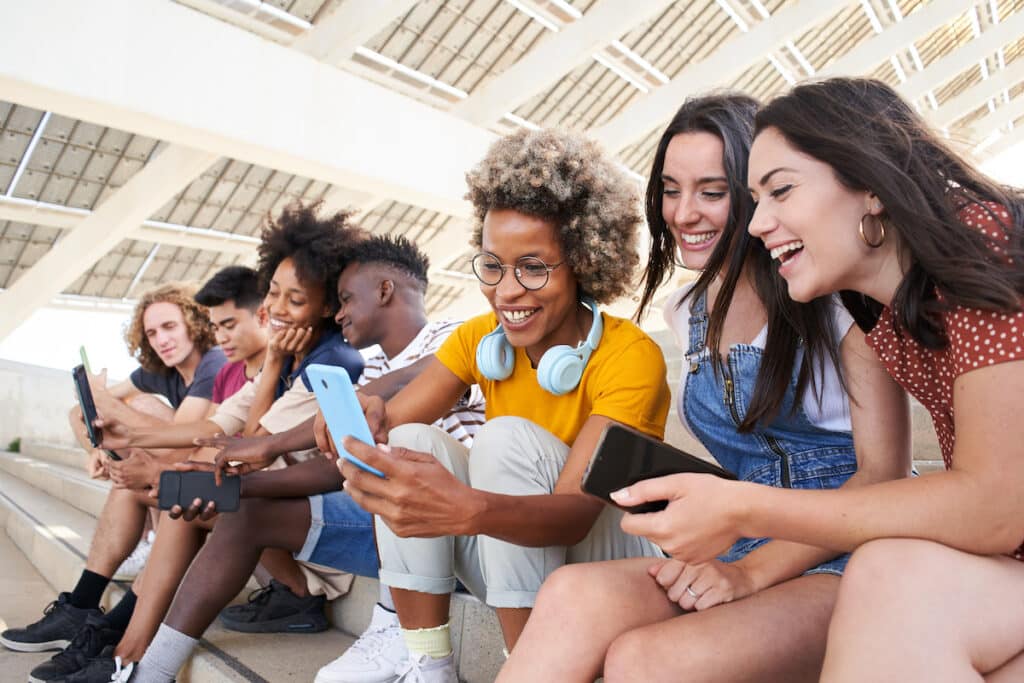
Play to Win: How Gamification Elevates OHM Measures
Effective Occupational Health Management (OHM) measures are more crucial than ever in light of the workplace’s quick evolution and the growing attention being paid to employee wellbeing.
For organizations to improve their OHM measures, they must investigate cutting-edge and effective strategies. Gamification is one such strategy that has established success and received wide recognition.
Understanding Gamification
Gamification is the process of integrating aspects of game mechanics and design into non-game contexts to increase participation, motivation, and engagement. It takes advantage of the propensity for play and competition to make chores or activities more interesting and compelling.
It is being used more frequently in the health and wellness industry to encourage positive actions and spur people to reach their fitness objectives.

The Mechanics of Gamification
Gamification is intended to increase motivation, engagement, and tracking of progress.
Typical gamification components include the following:
- Points represent a quantifiable measure of progress or achievement within a game-like system. They give you a real sense of achievement and can be used to unlock rewards or climb leaderboards.
- Rewards are incentives given to participants for achieving specific goals or milestones. They can be both material (discounts, products, or access to premium content) and immaterial (unlocking higher levels or receiving exclusive benefits). They serve as motivators, reinforcing positive behaviors and promoting ongoing participation.
- Challenges give participants well-defined tasks or missions to complete. They enhance the gamified experience with a sense of adventure, progression, and narrative. Within the gamified system, challenges give participants a specific goal and a sense of purpose.
- The tracking of progress is an essential component of gamification. It enables participants to keep track of their growth, accomplishments, and general performance within the gamified environment.
- Badges are visual representations of achievements or accomplishments. They serve as virtual symbols of recognition and can be awarded for specific milestones, skills, or completed challenges.
- Leaderboards display rankings of participants based on their performance or points earned. They add a competitive element by highlighting outstanding performers, promoting friendly competition, and inspiring participants to aim for higher rankings.
These gamification components produce a motivating and interesting experience. They take advantage of our need for success, accolades, competition, and a sense of advancement by appealing to human psychology.
Key psychological factors
The use of numerous different psychological mechanisms to which we are all susceptible explains why gamification is effective. It taps into intrinsic motivation, the inner drive and pleasure people get from doing something. This happens because it stimulates intrinsic motivation by enhancing the fun, satisfaction, and challenge of tasks, which boosts engagement and prolongs participation.
The desire for success and a sense of advancement is innate in humans. By offering specific objectives, checkpoints, and a clear visual of one’s progress, gamification satisfies this psychological need.
Gamification gives players specific objectives to work toward. Motivation and focus are increased by establishing specific goals and developing a sense of purpose. As they work towards achieving these objectives—which can include finishing quests, hitting targets, or earning rewards—participants become more motivated to participate.
Humans are social creatures, and gamification takes advantage of this by incorporating friendly competition and social interaction. A sense of community and camaraderie is fostered by leaderboards, team challenges, and cooperative quests. Participants are encouraged to perform better than their peers, win praise, or cooperate to achieve common goals.

Instant feedback and rewards provided by gamification are strong motivators. Quick feedback lets participants know where they stand, helps them see where they can improve, and rewards good behavior.
Gamification enables personalization and autonomy, fostering a sense of control and agency among participants. Individual needs and preferences are catered for in personalized experiences, which heighten feelings of ownership and investment.
Gamification uses our innate psychological tendencies to create rewarding, enjoyable experiences that encourage participation and active success.
The Benefits of Gamification in OHM Measures
Some facts and figures
By incorporating elements of play, competition, and rewards into OHM, gamification increases the fun factor and increases employee engagement. According to a study in the Journal of Occupational and Environmental Medicine, adding gamification components to workplace health programs increased employee engagement by 52% when compared to conventional programs.
Your employees are encouraged to participate, perform well, and actively achieve tangible results by incorporating elements like points, badges, or leaderboards. This innate drive maintains interest and fosters a sense of accomplishment. A study published in the Journal of Medical Internet Research examined the effect of gamification on participation in an online health program. It found that incorporating elements like points, badges, and leaderboards increased participation rates by 30% compared to non-gamified approaches.
Your staff members can learn new information and skills and reinforce existing knowledge through interactive quizzes, simulations, or challenges. They can also practice these skills in a real-world setting. Employee participation in the learning process is further encouraged by the elements of competition and progression.
OHM programs are made more socially engaging through gamification, fostering teamwork, competition, and employee interaction. Their connection is strengthened by this social interaction, which also promotes knowledge sharing.
Fast feedback and acknowledgement are made possible by gamification. Giving your team immediate feedback on their performance, accomplishments, or task completion gives them a sense of direction, progress, and success.
Gamification increases your employees’ sense of control and investment by allowing them to customize their experiences, set goals, and select challenges that fit with their interests and preferences. Their engagement is increased by this autonomy because they feel more connected to and accountable for their own well-being.
Provide valuable data for your OHM measures
Gamification can provide valuable data for assessing the effectiveness of your OHM programs and identifying areas for improvement.
Through various metrics, such as points earned, levels completed, or challenges overcame, gamification tracks participants’ performance and progress. These metrics offer quantitative information on participation rates, levels of individual and group engagement, and the overall success of the OHM program.
Data on the participation and program completion rates of your employees are recorded through gamification. It helps identify the level of engagement and commitment of participants. You can analyze these rates to assess the reach and impact of your OHM initiatives and identify potential gaps or barriers to participation.
Gamification provides real-time feedback on employees’ performance and achievements. This feedback data can be collected and analyzed to assess the effectiveness of specific interventions or activities within your OHM measures. It allows you to identify what aspects of the gamified system are driving desired behaviors and engagement and adjust strategies accordingly.
Surveys and feedback mechanisms are frequently used in gamified OHM programs to collect participant feedback. This qualitative data helps capture employees’ perceptions, attitudes, and experiences with the gamified system. Analyzing this feedback provides valuable insights into the strengths and weaknesses of your OHM measures, allowing for targeted improvements and refinements.
The data collected through gamification can be analyzed to generate insights and inform evidence-based decision-making. By identifying trends, patterns, and correlations in the data, you can pinpoint areas of improvement, optimize interventions, and allocate resources more effectively to enhance the overall effectiveness of your OHM programs.
This is why Humanoo, as a digital OHM service, uses gamification. Through our dashboard and our aggregated reporting, we empower you to make data-based decisions for your employees’ well-being. By leveraging the data collected through gamification, you will gain a comprehensive understanding of the effectiveness and impact of your OHM initiatives.
Foster teamwork and collaboration
Gamification can introduce cooperative challenges that require your employees to work together to achieve a common goal. By fostering teamwork, your team develops a sense of camaraderie and builds relationships, contributing to a more supportive culture.
Gamified OHM programs often include leaderboards that track team performance rather than individual achievements. Team leaderboards create a sense of shared responsibility and motivate employees to work together towards a common goal, fostering a supportive culture rooted in teamwork.

When your employees collaborate and collectively achieve milestones or targets, they can earn rewards or unlock benefits together. This shared sense of achievement enhances teamwork and cultivates a supportive culture, as they celebrate each other’s successes and collectively reap the rewards of their collaborative efforts.
Gamification can introduce team-based challenges and incentives that encourage employees to work together towards a shared goal. This cooperative approach strengthens bonds among team members and nurtures a supportive culture. That is why, Humanoo offers you the opportunity to create team challenges.
By fostering teamwork and collaboration, gamification in OHM programs creates a sense of shared responsibility, mutual support, and collective ownership over health and safety practices.
Fosters positive change
Research conducted by the National Center for Biotechnology Information (NCBI) in 2015 showed that gamified interventions in occupational health management led to a 45% increase in positive behavior changes, such as increased physical activity, better nutrition, and reduced employee stress levels.
A research paper published in the Journal of Applied Research indicated that gamification in workplace wellness programs led to higher levels of employee satisfaction and enjoyment, which contributed to improved overall well-being.
Conclusion
By infusing elements of play and competition, gamification has the potential to revolutionize how we approach occupational health management.
That is why gamification is at the core of our app. Are you interested in knowing more? Then book a demo with one of our advisors!